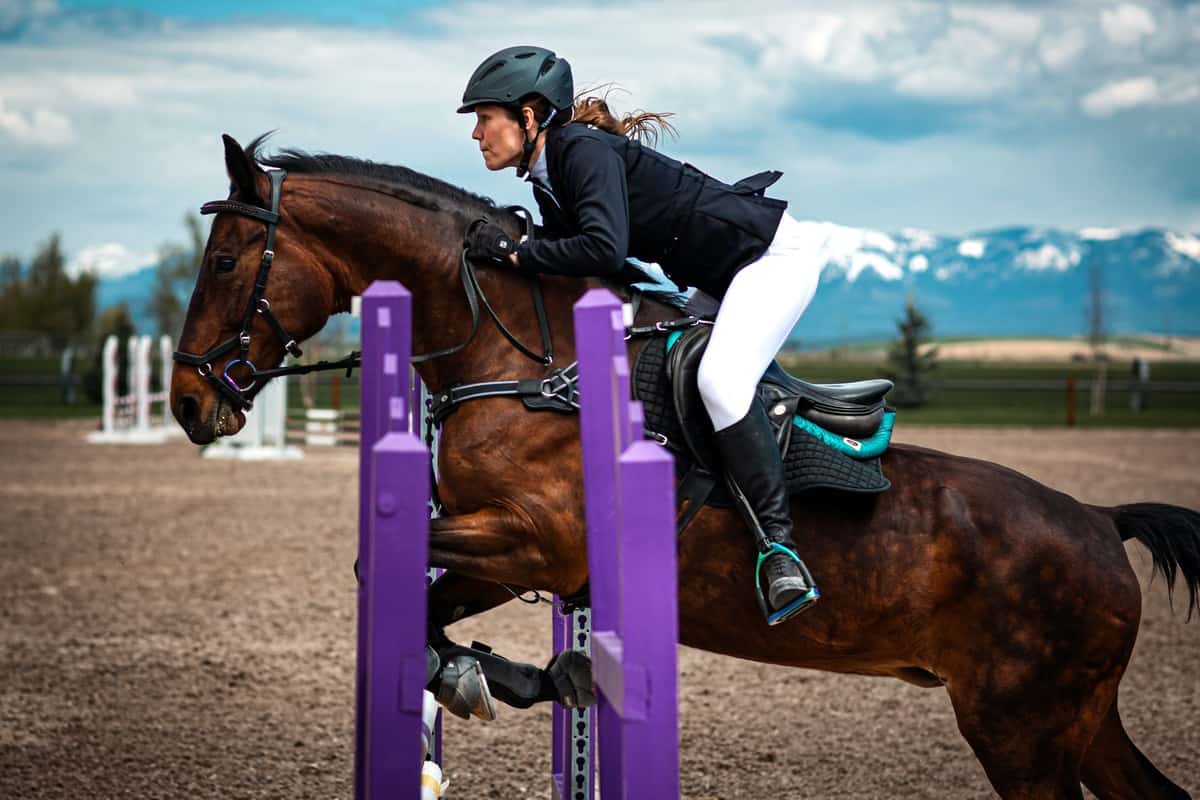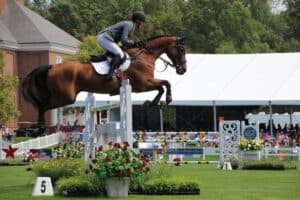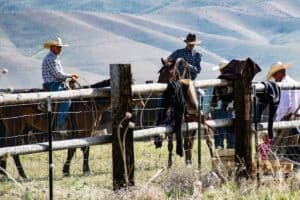English horse riding style is one of the most common styles of horse riding which is done around the world. The name suggests that this style of horse riding is only used in Britain, but this is partially true because the English style of horse riding has been used in many countries around the world with some modification to the style itself, but the concept has always remained the same.
Germany, France, Italy, and Spain are just some of the countries to name which used this style of riding. In English riding, the rider uses both of his hands to control the rein. The saddle attached to the horse allows the horses freedom so that they can move in an optimal manner. The saddles are small and flat, they place the riders in close contact with the horse.
Types of horse riding
There are different styles of riding a horse but there are two most common horse-riding styles which are followed around the world:
- English riding style
- Western riding style
Some horse riders also consider another horse-riding style common. The other riding style which is common around the world is:
- Group riding style
Among all these riding styles, English riding style is the most common. It has been promoted throughout the world. Olympics include three different riding disciplines, all of which belong to English style of horse riding.
All these riding styles have different types of events which may differ from each other. In this article, we are only going to discuss the events included in the English style of horse riding.
Differences between English riding and western riding
It is a very common question: ‘What is the difference between the two horse riding styles?’ There are both similarities and differences between the two riding styles. English riding style is very different from the western riding style, but the basics of the riding is the same.
The mains difference between both horse-riding styles are follow:
- Equipment
The saddles used for horse riding are small and flat. The flatness of the saddle makes the horse-riding experience uncomfortable. It is designed to give the rider close contact with the horse.
In western riding styles the saddles used are big and heavy. It is designed to distribute the weight of horse riding across a large surface area of the horse’s back which makes the horse-riding journey comfortable.
- Origin
English horse-riding style came not only from Britain but from all around the world. On the other hand, Western horse-riding style came from the ranches of United States of America.
- Horse type
English horses are required to be tall and must have enormous amount of strength so that they can travel with a variety of speed. They must be able to maintain their balance as they have to jump over obstacles.
Western horses are required to be compact and have the stamina for steady travel all day.
- Attire
English riders wear pants, fitted jacket and tall boots. While English riders wear jeans, comfortable shirt, and western style boots.
- Way of controlling the horse
In English style of riding horse, the riders hold the reins in both of his hands while in the western riding style, the rider holds the reins in only one of his hands. His other hand naturally hangs on one side of the horse, or it may just rest on his lap.
Horse types for English horse riding
English riding style requires the horses to be fast, tall and they must have physical strength. They must be able to maintain their balance, especially after a jump. Each discipline within the English riding style demands different type of skill from the horse and different horse breeds may be required for different horse-riding disciplines. Andalusians, Hanoverians, and Warmbloods are best horse breeds for dressage; Throughbreeds and warmbloods are favored for eventing and horse jumping; Thoroughbreed are favored for hunt-seat; Morgan horse and American saddlebreds are best for saddle seat while Arabian horses tend to perform well in English pleasure.
Dressage
Dressage is mostly considered as a traditional horse-riding style. Dressage requires a participant to perform a specific routine of movements while maintaining rhythm. It is an art in which the movements of the horse and the rider produces a dance like event. Dressage is a test of balance, obedience, suppleness and above all it is a test of the connection between the rider and the horse. It also tests the training of the horse as well as the rider. It is one of the three horse riding disciplines which are included in the Olympics and has been a part of the Olympics since 1912.
Eventing
Eventing is a type of English riding in which competitors take part in three contests: Dressage, Show jumping and Cross country. Eventing is also known as the triathlon of the equestrian world. It tests all the skills required for the three horse riding disciplines. It tests rhythm, harmony and balance required in the dressage phase; endurance, speed and bravery in cross country phase and the balance and the jumping ability of the horse in show jumping. Eventing is held as three days eventing and one day eventing. The first eventing competition was held in France in 1902. It officially became a part of the Olympics in 1912. The first eventing competition of Olympics was held in Stockholm, Sweden.
Show jumping
Show jumping is a competition which tests the ability of a horse to jump over obstacles like walls or fences. It is a timed competition which requires the horse and its rider to recover and maintain balance after a jump so that they can prepare for the next jump. The height of obstacles is adjusted according to the type of a particular event. The typical height of obstacles is 1.6 meters. Show jumping tests the jumping skills as well as the physical strength of the participant. Horse jumping was played in the Olympics for the first time in 1900 but it became a regular part of the Olympics in 1912.
Hunt-seat riding
Hunt-seat riding is also known simply as hunting. It is a type of forward seat riding (A position used by equestrians while jumping over obstacles). Hunt seat riding is based on the tradition of fox hunting. It stimulates the experience which a rider must undergo while hunting and this is the reason due to which the competition is a combination of both flat work (riding without any jumps) and jumps. Hunt seat riding is a riding discipline which is common in North America and Canada. Although hunt-seat riding is not a horse riding discipline included in the Olympics but most of the show jumpers start their training with horse seat riding.
Saddle seat
Saddle seat riding is a discipline of English riding which is designed to show off the highest action of horse. It requires a horse to have the capability of high stepping. The goal of saddle seat is to show off extravagant gaits of certain breeds of horse. This discipline of horse riding is mostly found in America, Canada, and South Africa. In saddle seat riding, the rider sits up straight on the horse back. His hands are higher than other horse-riding disciplines. The rider can be penalised if he is leaning forward. Saddle seat riding also requires the rider to make the riding look effortless. He must sit still and well formed on the horse making the riding look like a breeze.
English pleasure
English pleasure is a term used for different horse-riding classes which can be seen in horse shows. Generally, the horses exhibit the natural gaits of horses as a group. The horses exhibit the trait of walk, trot, canter and may even extend to gallop. In English pleasure the horse is ridden either under hunt seat or saddle seat tack. In English riding the horse must show that it is pleased to be ridden. The horses are tested for their manner, the quality of their performance and their conformation (the muscular structure and bone structure of the horse and their proportion in relation to each other).
Conclusion
In summary, English horse riding is not just a sport—it’s a timeless art form fostering a profound connection between humans and horses. From the elegance of dressage to the thrill of jumping, it offers a journey of self-discovery and partnership. Beyond the saddle, it imparts life lessons of patience and communication, highlighting the enduring bond between rider and horse. Celebrate the heritage, embrace the lifestyle, and let English horse riding be your gateway to a captivating world where rider and horse create a harmonious story of grace and collaboration




Outstanding feature
Excellent write-up